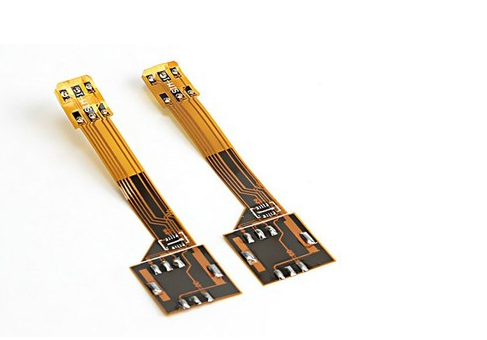FPC cost analysis
PCB factory: If the circuit design is relatively simple, the total volume is not large, and the space is suitable, most of the traditional internal connection methods are much cheaper. If the circuit is complex, processes many signals, or has special electrical or mechanical performance requirements, FPC is a better design choice. When the size and performance of the application exceed the capacity of the rigid circuit, the flexible assembly method is the most economical. A 12mil pad with 5mil through holes and an FPC with 3mil lines and spacing can be made on a film. Therefore, it is more reliable to mount the chip directly on the film. Because it does not contain flame retardants that may be a source of ion drilling pollution. These films may be protective and cure at a higher temperature to obtain a higher glass transition temperature. The reason why flexible materials save costs compared to rigid materials is the elimination of connectors.
High-cost raw materials are the main reason for the high price of FPC. The price of raw materials varies greatly. The cost of the raw materials used in the lowest-cost polyester FPC is 1.5 times that of the raw materials used in the rigid circuit; the high-performance polyimide FPC is as high as 4 times or higher. At the same time, the flexibility of the material makes it difficult to automate processing during the manufacturing process, which leads to a decrease in output; defects are likely to occur in the final assembly process, such as peeling off flexible accessories and breaking lines. This type of situation is more likely to occur when the design is not suitable for the application. Under high stresses caused by bending or forming, it is often necessary to select reinforcing materials or reinforcing materials. Although the raw material cost is high and the manufacturing is troublesome, the foldable, bendable, and multi-layer splicing function will reduce the size of the overall assembly, and the materials used will decrease, so that the total assembly cost is reduced.

The FPC industry is undergoing small but rapid development. The polymer thick film method is an efficient and low-cost production process. This process selectively screen-prints conductive polymer inks on inexpensive flexible substrates. Its representative flexible substrate is PET. Polymer thick film conductors include silk-screened metal fillers or carbon powder fillers. The polymer thick film method itself is very clean, uses lead-free SMT adhesive, and does not need to be etched. Because of its use of additive technology and low substrate cost, polymer thick film circuit is 1/10 of the price of copper polyimide film circuit; it is 1/2 to 1/3 of the price of rigid circuit board. The polymer thick film method is particularly suitable for the control panel of the device. In mobile phones and other portable products, the polymer thick film method is suitable for converting components, switches and lighting devices on the printed circuit board into a polymer thick film method circuit. It not only saves costs, but also reduces energy consumption.
Generally speaking, FPC is indeed more expensive than rigid circuit, and the cost is higher. When FPC is manufactured, in many cases, it has to face the fact that many parameters are beyond the tolerance range. The difficulty in manufacturing FPC lies in the flexibility of the material.
Despite the aforementioned cost factors, the price of flexible assembly is declining, becoming close to traditional rigid circuits. The main reason is the introduction of newer materials, improved production processes and changes in structure. The current structure makes the thermal stability of the product higher, and there are few material mismatches. Some newer materials can produce more precise lines due to the thinner copper layer, making the components lighter and more suitable for small spaces. In the past, the copper foil was adhered to the adhesive-coated medium by using a rolling process. Nowadays, copper foil can be directly formed on the medium without using an adhesive. These techniques can get a few microns thick copper layer, get 3m. 1 Precision lines with even narrower widths. After removing some adhesives, FPC has flame retardant properties. This can speed up the uL certification process and further reduce costs. FPC board solder mask and other surface coatings further reduce the cost of flexible assembly.
In the next few years, smaller, more complex and higher assembly cost FPCs will require more novel methods of assembly, and hybrid FPCs will need to be added. The challenge for the FPC industry is to use its technological advantages to keep pace with computers, remote communications, consumer demand, and active markets.